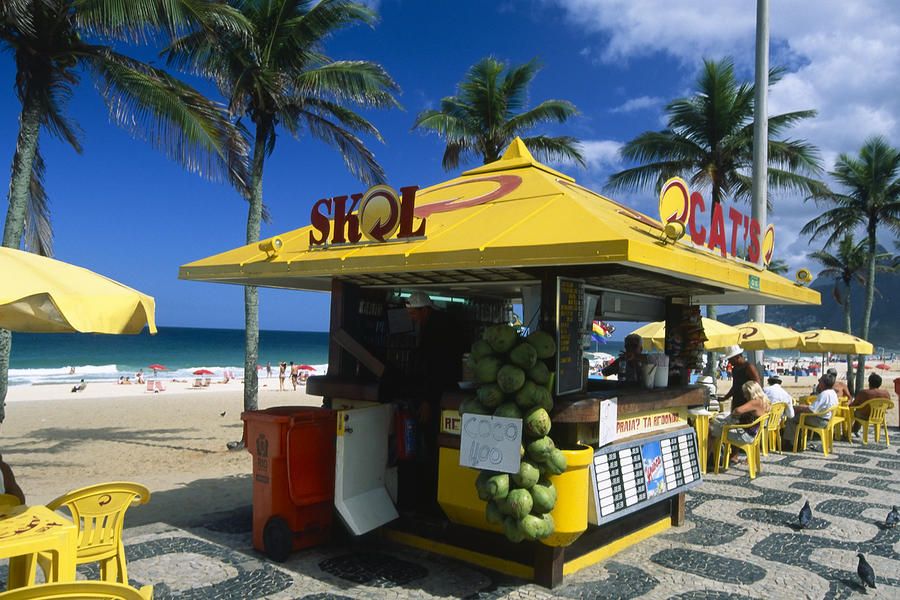Enjoying a day at a public beach in the US often requires planning an expedition. You need to prepare ahead for food and drinks. Ice should go in the cooler at least an hour before leaving, and the beach material staged by the car for loading. Get your bathing suit on, with some light clothes to cover, then pack the car with chairs, cooler, blanket, towels, umbrella, and a bag containing sunscreen, books, snacks, and related sundries. If you’re feeling ambitious, maybe include a small grill and some charcoal. You might have even invested in a beach wagon with wide wheels capable of being rolled across the sand.
Got kids? There’s more stuff to pack: floaties, plastic buckets with shovels, and kid-friendly drinks and snacks.
Pile the family in the car, drive to the beach, and line up at the entrance to the parking lot, where you’ll pay your fee, find a place to park, and finally haul your stuff around to an open space on the sizzling hot sand. At the end of the day, carry everything back to the car, repack, drive home, unpack, and clean the sand out of the car.
In much of South American, a day at a public beach can be more like a private resort experience without the expense. Put on your bathing suit and light clothes to cover, grab your beach bag, and go outside to catch a cab.
The cab will deposit you at your preferred beach. Along the boardwalk are small restaurants every 100 yards where you can grab a snack, or eat a full lunch while enjoying the surf. If you just want to stroll along the waterfront, there are vendors to hand you an ice cream cone or a cocktail. Sunglasses, jewelry, t-shirts, beachwear, hats, sandals, you can buy whatever you want from vendors along the way.

When you’re ready to relax, walk across the sand to the water’s edge. Don’t worry about burning your feet; vendors have placed soaker hoses along the path to their particular area so the sand is cool and moist.
These vendors have come to the beach at dawn, each to rope off an area and set up a stack of lounge chairs and tables and a pile of umbrellas. They also have a commercial grill and a cocktail bar. Point out an open spot on the sand and they’ll set up lounge chairs, a small table and your umbrella. Want something to eat or drink? They’ll bring it to you.
If you want activities, or your kids do, there are courts for volleyball and paddleball, and often areas for beach soccer, kick volleyball, and even teqball (foot ping pong).
At the end of the day, just settle your bill and catch a cab home.
This beach experience is not only more civilized and relaxing than what we do in the US, it’s also more environmentally friendly and, surprisingly, cheaper. Each beach-going family in South America doesn’t need to buy their own stuff, and they don’t need a garage to store it or a large car or SUV to haul it to and from the beach. Taxpayers don’t need to build, maintain, and patrol a parking lot at each beach, and there’s less traffic overall since a single cab can bring loads of passengers in and out all day versus one vehicle per group.
Vacations at South American beaches can also be simpler and less expensive since everything needed for the beach is already at the beach; there’s no need to rent a house on the shore or stay at a waterfront resort.
Having vendors at public beaches also provides employment for locals and, since the hurdle for these entrepreneurs to start a business is relatively low, prices and services are competitive.
Comparing a day at the beach in the US vs South America is one facet of a larger contrast: In the US, we tend to believe that the more you own, the more luxurious your lifestyle. But the things we own also own us, and sometimes sharing things is more luxurious and cheaper than owning them.